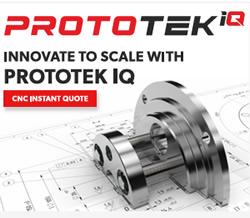Understanding the Benefits of Active PoE Switches
Article by Henry Martel, Field Application Engineer, Antaira Technologies
LAS VEGAS, NV, APRIL 14, 2025 - The Industrial Internet of Things (IIoT) has been greatly impacted by Power over Ethernet (PoE). First emerging in the early 2000s, this simple yet transformative technology simultaneously supplies DC power while transmitting network data to PoE powered devices via a single Ethernet cable. For network administrators, this means reducing the complexity and cost of installation, deployment, and maintenance. PoE has proven especially critical in deploying IIoT devices remotely as part of edge computing infrastructures where electrical power is not easily accessible.
Like all IIoT technology, PoE protocols are evolving and becoming smarter, more powerful, and increasingly sophisticated in their management and control. In this article we look at Active PoE versus Passive PoE in Ethernet switches. Passive PoE was introduced first as a non-standardized method to deliver power over Ethernet cables. It is largely being phased out in favor of Active IEEE standardized technology featuring power negotiation and detection, making it safer and more versatile.
Here's what you need to know.
What is Active PoE?
An Ethernet switch, midspan or other PSE (Power Sourcing Equipment) is said to be "active" if it is compliant with IEEE 802.3af (PoE), 802.3at (PoE+), 802.3bt (PoE++) or 802.3bt Type 4 (PoE++) standards, whereas a non-compliant PSE is using "passive" power or non-standard power.
Switches with active PoE are equipped with a built-in intelligent power controller. These switches will only inject power down the link to an endpoint device following a secure negotiation known as a "handshake" that determines compatibility, classification, and power requirements. If the device is incompatible with or incapable of accepting standard PoE, the switch will only supply the network connection. Negotiation prevents power from being sent to a non-compliant or non-PoE device which could damage its network port or burn out its electronics.
In contrast, a passive PoE switch doesn't engage in any form of power negotiation. Passive PoE is a straightforward approach to power transmission. Electricity at a fixed output voltage, typically 24V, is always "on" regardless of the rating of the endpoint device. So, as long as the device is connected, it will receive a constant flow of power over the Ethernet cable.
There is another important difference: Although both active PoE and passive PoE switches share a maximum cable distance of 100 meters, passive is limited to 10/100BASE-T Ethernet while active PoE switches support 10/100/1000BASE-T Ethernet (Gigabit Ethernet) for faster, more stable networks.
An Argument for Passive PoE
Passive POE switches are still deployed in networks. Some users want fixed power to be output economically as possible, for instance in Wireless Internet Service Provider (WISP) applications. Others have a legacy devices with lower power requirements.
An argument can also be made that certain passive PoE switches feature higher current limitations. However, the higher wattage benefit has been largely eliminated with the introduction in 2018 of active PoE switches with 802.3bt (60W) and 802.3bt (100W) Type Four. IEEE 802.3bt enables higher power delivery over Ethernet cables by using all four twisted pairs rather than two.
How Active PoE Switches Operate
To illustrate how Active PoE works, let's assume an Antaira PoE managed Ethernet switch is connected to a PoE-enabled wireless access point (WAP). For simplicity, we will also assume IEEE 802.3af (PoE). The process goes as follows:
1. First, the Antaira switch will output minimum voltage to detect a characteristic signature of IEEE-compatible PDs (25kOhm resistance). Once this signature has been detected, the PSE knows that higher voltages can be safely supplied. If the signature is not recognized, the process stops here.
2. Next, the switch moves onto classification. The Antaira switch applies 15-20V to the WAP so it can classify the device. It does this by detecting resistance and measuring current. PoE-compatible devices are classified from Class 0 to 8. Each Class signifies the proper input power, output power, PD type, and matches to a corresponding IEEE PoE standard.
3. Once PoE classification is complete, the Antaira switch begins to supply power to the WAP, starting from low voltage to full 48VDC. Once 48VDC reached, the Antaira switch continues stable output unless the WAP is removed or if power consumption is either overloaded, short-circuited, or is out of the switch's power budget.
Knowing the difference between an active and passive PoE switch will help prevent permanent damage to network devices. If you have a legacy passive PoE switch, the smart move is to upgrade to an 802.3af/at/bt compliant managed or unmanaged Ethernet switch.
Learn more at www.antaira.com
Featured Product

